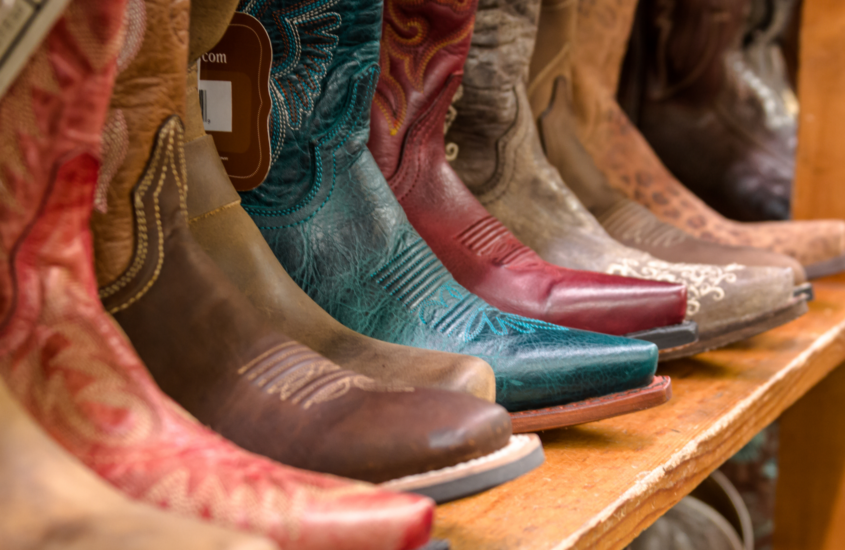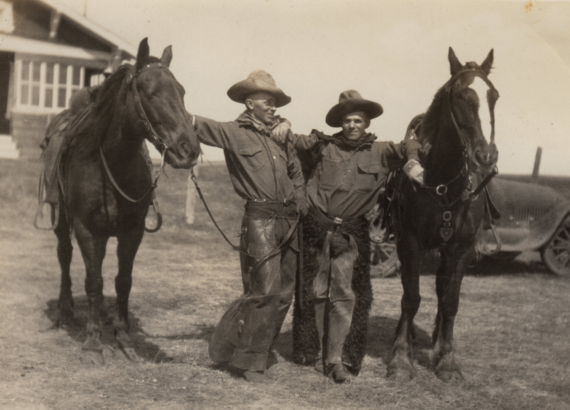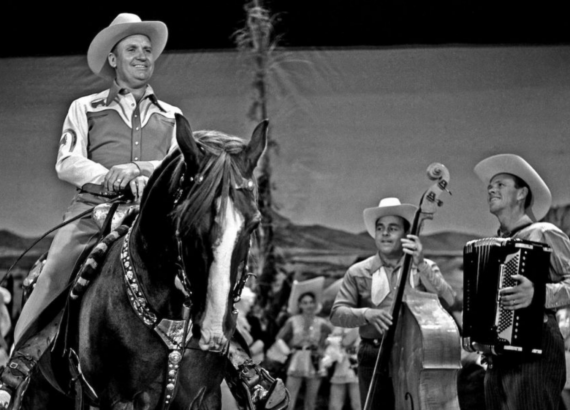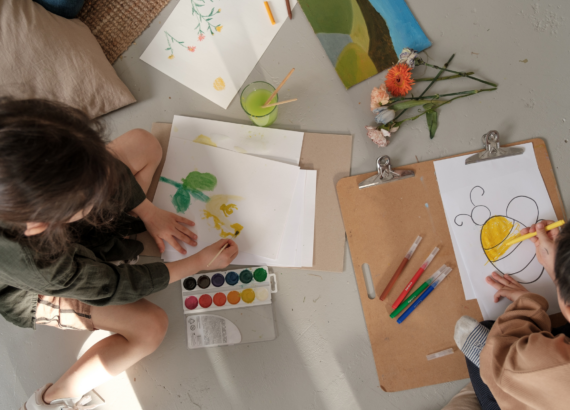American Cowboy: The Spirit Behind the Fashion Trend
AmericanMom Team |
Who here has purchased a pair of cowboy boots and seen, before their very eyes, their whole personality change? 🙋♀️😂We totally get it. The cowboy fashion trend is very alluring, rugged, fun, and sometimes glitzy (we’re looking at you, Dolly Parton). And, honestly, let your cowboy spirit fly free with all the fringe, jeans, boots, and hats you want. But we wanted to point out that cowboy culture is so much more than a fashion trend. We’d like to unlock the true heart of cowboy culture for everyone to enjoy!
A Little Cowboy History

I think we all pretended to be cowboys when we were younger. The glamor of it could be found in the adventure of it all, the fashion (of course), and the wild and free spirit of cowboy life as seen on TV. Little did we know in our childhood days that there was a deep and rich history behind the cowboy lifestyle, and we definitely couldn’t grasp its importance to American history, development, and industry.
Imagine the wide-eyed joy of little you discovering that cowboys weren’t just movie heroes, but an actual job!
Like pretty much everything in America, the idea of the cowboy comes from somewhere else. To be specific, the cowboy is the American version of the Mexican vaquero. And the cowboy’s job is very simple: move the cow herd from where they are raised to where they can be sold. Obviously, however, because of terrain, the nature of wild animals, weather, and a hundred other factors, the actual process of getting cows 1500+ miles away from their home was rough, rugged, deadly, dangerous, and not for the faint of heart.
In America, a large number of original cowboys were African American, from native tribes, or at least partly of South American descent. They worked in groups to keep the herd in check, safe, and on the move—collectively being called drovers. The cowboy worked, on average, 15 hours per day, spending almost all that time in the saddle.
The cowboy was essential to the cattle trade, and therefore meat markets. However, by the 1870s, the cowboy profession was on its way out thanks to train lines. Today, cowboys are primarily found on ranches, tending to the upkeep, health, and rounding up of cattle in various large pastures. The profession has adapted beautifully to modern times, upholding the original purpose while expanding into the realm of ranching in addition to cow herding and selling.
Thank you ushistory.org and fieldnotes.pecosoutdoor.com for the information!
Cowboy Culture
As stated before, cowboys, while not what they originally were, have maintained the culture, spirit, essence, and purpose. They are still vital to the cattle industry and many of the principles that made the cowboy lifestyle so attractive remain in play in the 21st century.
Rugged Individualism

Spending days on the dangerous road means learning how to fend for yourself. Cowboys answered to themselves, their boss, and God. They were Boy Scouts on steroids when it came to survival, horse riding, outdoor, navigating, environmentalism, nature reading, and animal care skills.
These were men who had a job and needed to do it well or risk their own death or that of the entire herd. They knew what it meant to work hard and rough it. They were familiar with America’s most wild and beautiful landscapes. And there was a sense of freedom and individualism that came with this roaming lifestyle.
Today is no different. The cowboys of the 21st century work long days, do dirty, unglamorous jobs, rough the weather, pray for healthy herds, risk their livelihoods, and embrace a patriotism that respects both their fellow man and the very land that they stand on. They are intimately familiar standing on their own two feet, being self-reliant, and reaching for a high bar in everything they do.
Nutritious, Simple, Hearty, Homemade Food

It might go without saying, but cowboys and ranchers are a big reason why we can all enjoy nutritious, real food. But they also enjoyed hearty meals on the road and at home. While on the road, there were lots of recipes that cowboys made including biscuits, pies, cornbread, chili, chicken, fish, racoon, and more (read some cowboy recipes here—including a sourdough starter!)
The point is, real, homemade food is a big part of the cowboy history and heritage. Growing and cultivating their own food on the ranch, relying on the land, building relationships with neighbors to barter, and having a hand in the meat industry all allow the modern cowboy to carry on the traditions of the road right at home.
Country Music

It’s hard to find a culture without music. And cowboys were, and are, no different. The drudgery of the day to day activities and travel, as well as the long nights out in the middle of nowhere around a campfire are the perfect breeding grounds for really good music. Long, lonely days often bred music that spoke about loves back home, the natural beauty of the country, the hardships and joys of a job cowboys were proud of, the animals they worked with, the people they met, and the many principles the cowboys held dear.
Some popular tunes from the height of the cowboy era include songs like Back in the Saddle Again, Bury Me Not on the Lone Prairie, The Cowboy, and Git Along Little Dogies.
The core of these songs is lyrics that describe the life, the longings, and the highs and the lows of the cowboy experience. These honest, simple songs had overall positive messages and glorified a high standard of personal character, work ethic, and patriotism. They were meant to be inspirational or tell the stories of those who lived this rugged life.
The lyrics and tunes often thought up on the road, but also written by famous country singers, were entertainment for the cowboys and many survive to this day, still making their way into the daily life of many modern cowboys.
Today, we even have some great contemporary country artists like Colter Wall, Dolly Parton, Bella White, Hank Williams, Sierra Ferrell, and Marty Robbins who carry the style over into their own lyrics and melodies.
Values

Gene Autry, singing his signature “Back In The Saddle Again” on The Ed Sullivan Show
The work ethic of cowboys and ranchers is clear; there are no off-days, and the work is hard. But there are other values found in cowboy and rancher culture that are probably best told through The Cowboy Code by Gene Autry:
The Cowboy Code By Gene Autry
- The cowboy must never shoot first, hit a smaller man, or take unfair advantage.
- He must never go back on his word, or a trust confided in him.
- He must always tell the truth.
- He must be gentle with children, the elderly, and animals.
- He must not advocate or possess racially or religiously intolerant ideas.
- He must help people in distress.
- He must be a good worker.
- He must keep himself clean in thought, speech, action, and personal habits.
- He must respect women, parents, and his nation’s laws.
- The Cowboy is a patriot.
With these values at the core of the culture, it’s hard not to see why cowboys are so glamorized. Often, they embody the very essence of heroism, becoming the standard for behavior, work ethic, principles, patriotism, professional conduct, and honest living.
So the next time you pull those cowboy boots out of the closet, wear them with pride knowing they stem from a timeless tradition that helped define what it means to truly live the American Spirit.






